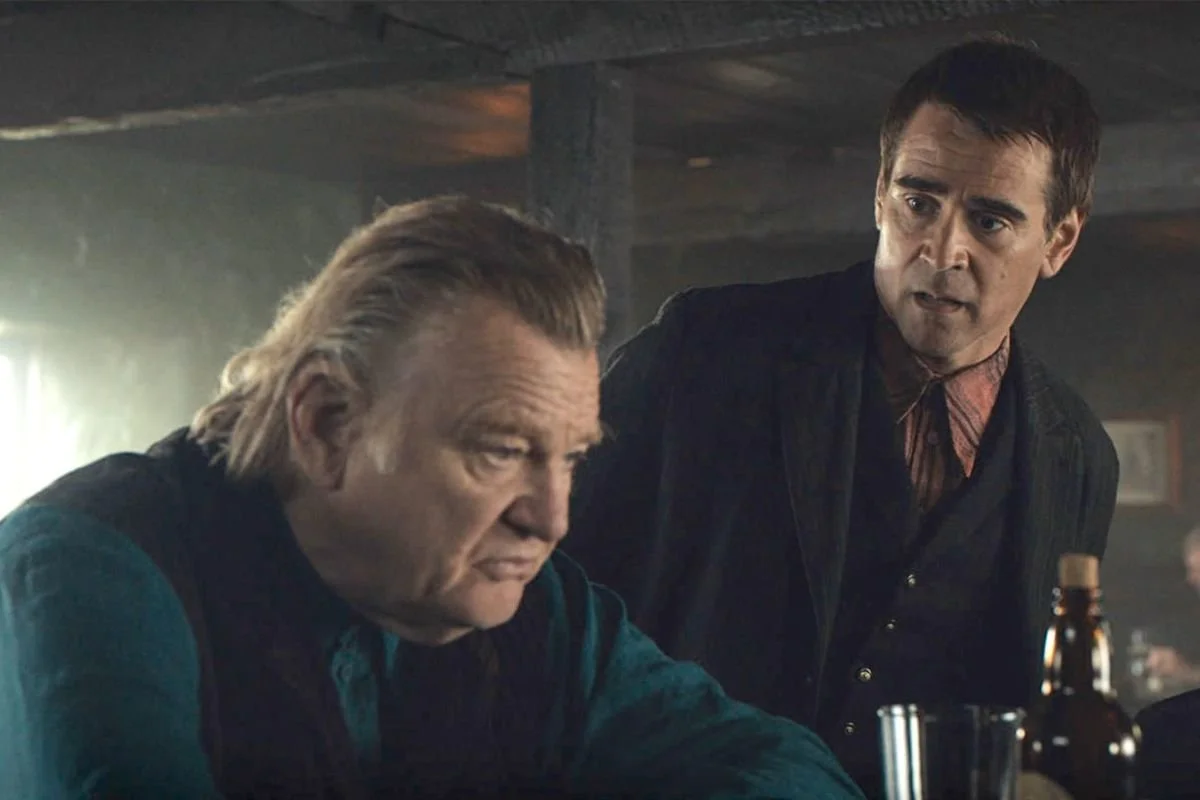THE BANSHEES OF INISHERIN
Directing: A-
Acting: A-
Writing: A-
Cinematography: A-
Editing: B+
You could say that The Banshees of Inisherin is writer-director Martin McDonagh’s return to form, or at least to his roots: his previous film set in Ireland—not native to McDonagh himself, who was born in London, but native to his parents—was the excellent, incredible debut feature film In Bruges (2008). That film also featured the same two lead actors, Irishmen Brendan Gleeson and Colin Farrell. Both films mix comedy and drama, and both go dark places. The key difference really, is that In Bruges offers more overt laughs and The Banshees of Inisherin has a singular depth of vision on its character’s tragedy.
That certainly shouldn’t dissuade you from seeing it, however: this is easily one of the best films of the year. And even though McDonagh’s previous film, Three Billboards Outside Ebbing, Missouri (2017) garnered the most Oscars of any—two wins, alongside five other nominations—it quickly faced a great deal of legitimate criticism, not least of which was its centering of whiteness in a story ostensibly addressing racial injustice. The fundamental issue with McDonagh’s telling of such a story is his position widely removed from the Black, or even an American, experience. Thus, what elevates both In Bruges and especially The Banshees of Inisherin is McDonagh’s own Irish heritage, and a clear depth of knowledge of his own peoples’ history.
In fact, this film is so steeped in Irish history, set on a remote and deeply rural island off the coast of Ireland in the 1920s during the Irish Civil War, which lasted just under a year from 1922 to 1923. There are almost certainly nuances that either reference or mirror that conflict, even though the film doesn’t come any closer to directly portraying any battles than the islanders hearing gunfire or seeing smoke rising from the mainland (which is, of course, itself an island). As someone whose knowledge of this conflict basically begins and ends with this very movie, I likely missed many such nuances. That does not make the film any less great than it is.
On the surface, anyway, this is a film about a breakup, not between romantic lovers, but between good friends, who are widely known to their community as men who spend their time daily drinking at the local pub together. But there comes a point—and this is where the film begins—when Colm (Gleeson) has come to realize he’s wasting his time, needs the space to pursue his musical passions before his days are numbered, and thus declares to said friend, Pádraic (Farrell), that “I just don’t like you no more,” and he wants to be left alone.
It sounds deceptively simple as a concept, and this is where once again McDonagh proves a uniquely adept storyteller (so long as he fully understands the environment in which he’s placed his characters). Farrell has never been better than his performance as Pádraic, a simple, kind man whose simplicity skirts the border of dullness, and whose emotionally intelligence cannot comprehend such a jarring removal of affection or companionship. Colm quickly grows so frustrated with Pádraic’s persistence in speaking to him, he declares that for every time Pádraic “bothers’ him again, he will take his pair of shears and cut off one of his own fingers.
As a viewer, I really hoped it wouldn’t actually come to that. But, Pádraic makes it difficult to hold onto that hope. This is a guy who declares the young man Dominic (a stupendous Barry Keoghan, for once not playing a villain or an unsettling creep) the dumbest guy on the island, only to start seeing evidence of this guy being, if not any more emotionally intelligent, then a bit more educated than him.
The Banshees of Inisherin is the kind of movie that, where other films might hint of an uncomfortable path and then pivot, instead leans right into those paths. Colm’s and Pádraic’s story is one of cascading wrong moves, the kind that turn friends into enemies. You know, kind of like a civil war.
I must also mention Kerry Condon as Siobhan, Pádraic’s sister he lives with. She is the stealth MVP of this film’s cast, playing the local woman increasingly exasperated with both her brother and Colm. She gets a fantastic, unforgettable scene with Gleeson, as Colm complains of how boring Pádraic is, only to have Siobhan reference all the men on the island and shout, “You’re all fecking boring!” There is some irony here, given the film’s full focus on men in the story, and it barely passes the Bechdel Test (at first I thought it didn’t, but then I remembered her conversation about her main with the woman at the shop in town).
This film is far from boring, however, notwithstanding how gradually its greatness truly reveals itself. It starts as a deceptively simple story deceptively told, just two guys whose lifelong friendship has inexplicably splintered. “Inisherin” is the name of the fictional island on which they live (gorgeously shot, by cinematographer Ben Davis, on and near the stunning limestone sea cliffs of the west coast island of Inishmore), and “The Banshees of Inisherin” is the name of the music piece Colm is composing. Or, a subtle reference to the characters themselves.
It may sound like some of this is a little on the nose, but that is not at all how it plays as the story unfolds, which is often as funny as it is sad. It seems fair to warm viewers that this movie is not the least bit upbeat, and its humor is often steeped in very dark themes, but it is also undeniably compelling, some might even say entertaining.
When friends show vulnerability then their friendship is vulnerable.
Overall: A-

